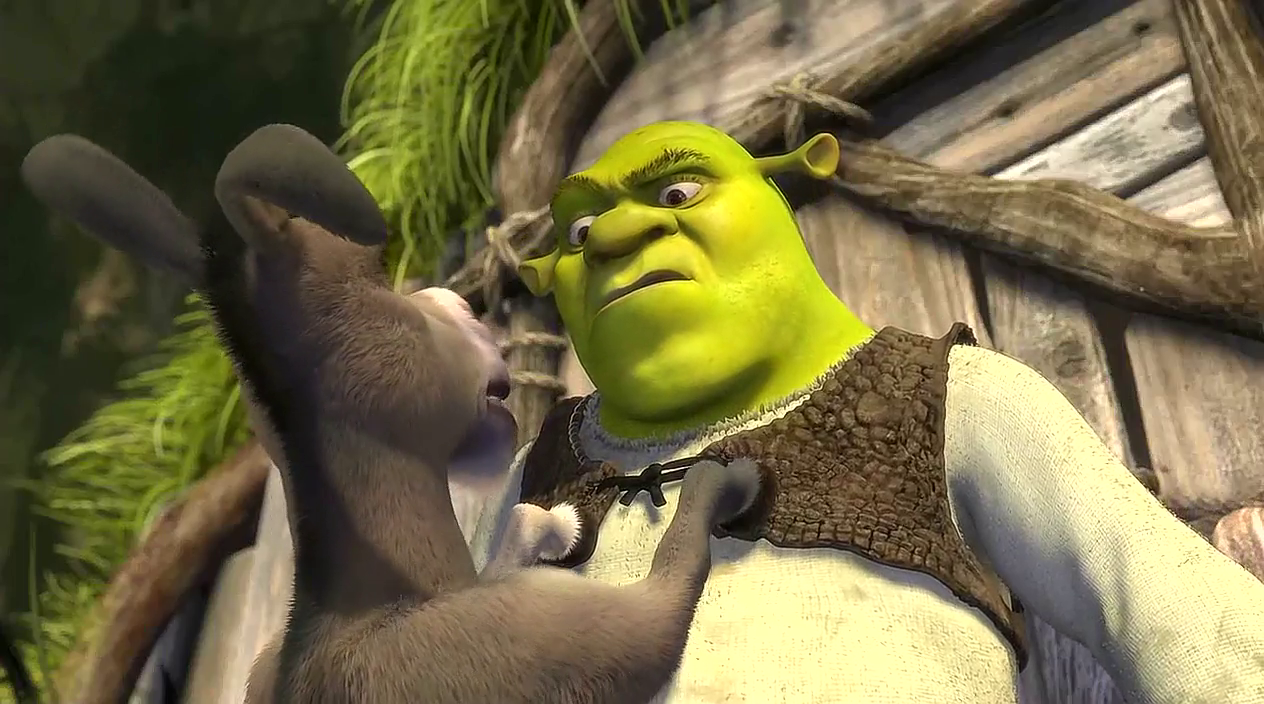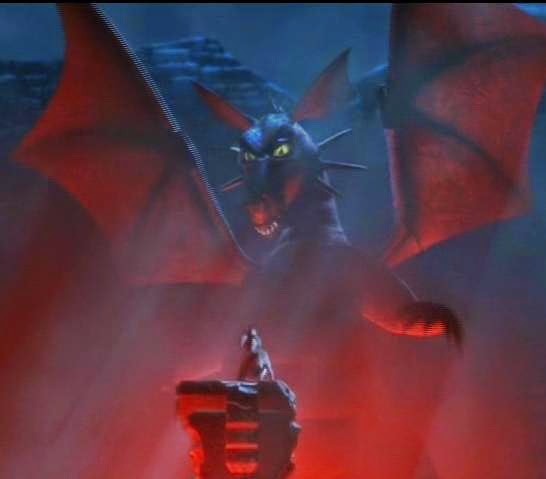Welcome back good readers as we begin a new retrospectives series! The franchise that we’re going to be focusing on for the next few weeks is the Shrek series (for the record though, I’m not including the holiday specials and countless short films on the DVDs in this analysis, otherwise I’d be at this for months). The franchise has been incredibly successful, raking in over $3.5 billion in just a decade and being popular among kids and adults alike. In this entry, we’re going to cover the film which started it all – 2001’s Shrek.
In 1990, William Steig published a children’s book called Shrek!, about an ogre who travels away from home and finds another ogre just as ugly as he is (and falls in love with her of course). It’s a gross and irreverent story, with very little in the way of plot. However, Steven Spielberg saw merit in the premise and bought the rights for the story prior to founding DreamWorks. He was initially planning to turn it into a traditionally animated film which hewed closely to the book, starring Bill Murray as Shrek and Steve Martin as Donkey. After the success of Toy Story, the film was reconstituted as a motion captured animation. However, the results were considered unsatisfactory, so it was once again restarted as a CGI animation. First time director Andrew Adamson was hired to co-direct alongside Kelly Asbury – however, Asbury dropped out after a year and story artist Vicky Jenson took over instead. Adamson actually wanted the film to appeal more to adults than the final film did, putting in more sexual jokes and Guns N’ Roses music (both ideas which caused a clash with the studio executives).
Initially, Chris Farley was cast to play Shrek, and recorded most of his dialogue. However, he died in 1997 before the film was completed. As a result, Mike Myers was cast to replace him. Myers actually recorded all of his dialogue twice, replacing it all of his original lines with the iconic Scottish accent that we hear in the final film. The process cost the film an additional $4 million, but was considered such an improvement that Spielberg himself thanked Myers for the change. The character also was better understood after the change and more comedy bits were added as the creators gained a better handle on the film. Janeane Garofalo was initially cast as Princess Fiona, but was unceremoniously fired and replaced by Cameron Diaz. Eddie Murphy was cast as Donkey, who was actually modelled after a real donkey named Pericles.
The plot of Shrek is quite different than the book it is based on. For one thing, in Shrek!, the ogre is so ugly that he actually smites donkey with his ugliness. In the film, Shrek is a grumpy ogre whose swamp becomes a dumping ground for fairy tale creatures by Lord Farquaad, who is trying to build the “perfect kingdom”. Farquaad declares he’ll give Shrek his swamp back if he rescues the perfect princess, Fiona, from her dragon guarded tower. Together Shrek and his annoying talking sidekick, Donkey, have to rescue the princess, but discover that there’s more to her (and themselves) than meets the eye…
I probably don’t need to tell you the plot to Shrek because let’s be honest – everyone has seen it. Even the last man on earth can quote it word for word (and you were doing it too alongside him). The plot is a relatively straight-forward fairy tale/hero’s journey, but the expectations are inverted and played with. Instead of the noble king vanquishing the terrifying monster to get the princess, the monster is the hero and the king is the villain. Furthermore, the princess is a monster as well. This simplistic plot makes the film appealing enough for children, but the inversions keep it fresh and interesting enough for adults as well. The inversions also help to make the film very funny. The humour in the film is a perfect mix of satire, references, gross-out humour and clever jokes, often springing from the excellent chemistry between the lead characters. There are also lots of pointless little moments in the film, such as the Robin Hood attack, which could have come across as little more than filler. However, these almost all end up being hilarious and highlights of the film (although the “muffin man” bit is the annoying exception). Some of the jokes are more adult-oriented as well, although there is plenty of content to entertain both children and adults. In general, the film is just plain funny and nearly every joke hits its mark.
As for the characters, all of them are a lot of fun. The performances are exceptional and it’s difficult to imagine anyone else in the roles. Mike Myers is great as Shrek, making us genuinely care about such a grumpy individual. Donkey could easily have been annoying as shit, but Eddie Murphy does a good job of keeping him funny throughout. Cameron Diaz also adds a lot to Princess Fiona, a role which could have easily been dangerously close to the “generic damsel in distress” if the wrong actress was cast. John Lithgow’s Lord Farquaad is also an interesting role – on the one hand, he’s an effective villain, but on the other hand he’s hilariously diminutive and unthreatening. Farquaad strikes a very delicate balance as a comedic villain, and in my opinion that balance is achieved perfectly. The minor supporting cast also add a few laughs, such as Pinocchio, the three blind mice and the Gingerbread Man.
I’m also pleased to see that the animation still holds up very well almost 13 years after the film’s release. Shrek isn’t quite as detailed or flashy as many of the CGI animated films which have succeeded it, but the characters’ movements are still top-notch and all of the scenes are rendered very impressively. I was watching the film with a critical eye towards the animation in particular to see if I could find any problems, but I ended up being more impressed by the little details, such as bent grass, Donkey’s fur, Shrek’s subtle facial details, etc. Shrek could be released today and still easily achieve nearly as much acclaim as it did in 2001.
If there’s a weak point in the film, I’d say that the biggest problem is probably Donkey and Dragon’s relationship. It makes for some funny moments initially, but it really seems to be done for little more than plot convenience. Donkey’s going to die? Make the dragon fall in love with him! Need to get to the wedding fast? Take the dragon! Lord Farquaad’s about to kill Shrek and Fiona? Make the dragon eat him! Dragon just deflates some of the more interesting ways the plot could have gone for the sake of convenience, and makes for some more awkward problems later on down the line… All things said and done though, Shrek is an awesome movie. Everyone loves it, from all ages. I remember going to my friends’ birthday 11th party and seeing the film with absolutely no prior knowledge of the film, and loving it. Seriously, if you haven’t seen Shrek yet then you must have been living in a Fallout vault or something.
8/10
Be sure to come back soon for the second part of this retrospective series, Shrek 2!





Best movie i have ever seen !